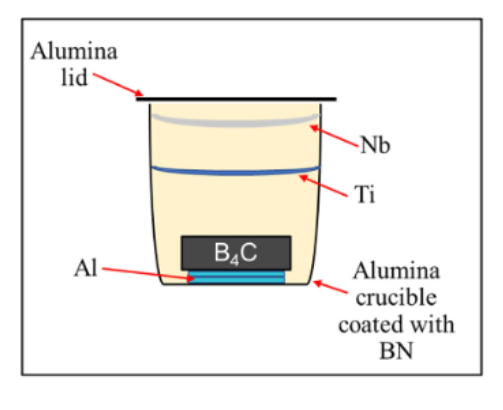Authors Corson L. Cramer, Amy M. Elliott, James O. Kiggans, Bianca Haberl, and David C. Anderson explore new techniques in their recently published, ’Processing of complex-shaped collimators made via binder jet additive manufacturing of B4C and pressureless melt infiltration of Al.’
In this study, the researchers aim to create collimator samples via binder jet additive manufacturing for further analysis in creating high-density geometries. Explaining that devices which can be used to manipulate neutrons can be helpful for evaluating a variety of different materials, the researchers point out that collimators specifically can prevent scatter of different rays (X-rays, gamma rays, and more). They also point out that isotopes must have very large neutron-absorbing cross sections for this process, with typical materials usually including cadmium, boron, and gadolinium.
“As neutron wavelengths become shorter (or energy becomes greater), the absorption cross sections become smaller. B-based materials are chosen in this research for two reasons. Firstly, it is the safest and easiest material to process with powders from the list of three aforementioned candidates for neutron absorbers. Secondly, materials such as Cd or Gd have a cut-off in their absorption cross-section at higher energies whereas B does not,” state the researchers.
Because B4C can be processed easily in powder form, it can be 3D printed as a pre-form, with cyanoacrylate adhesive for structural support. Here the collimator forms were ‘infiltrated’ with three Al grades to include:
- AA 2024
- AA 1100
- Pure Al
AA 2024 in particular was chosen due to the ease in making it into a composite, while other grades are used in comparing different microstructures. The team required robust composites for use in collimator applications here, and for verification regarding use in this study, they compiled data from other samples of the same geometry.
“This approach has three higher level findings: one, the material net-shaping is improved; two, the materials works well as a collimator in terms of neutron absorption on ability to be shaped as desired; and three, the material is useful in systems requiring high mechanical loads,” stated the researchers.
They were able to create and process numerous and highly dense B4C-Al composites, fabricated via BJAM. The powder preforms, ‘subsequently pressureless,’ were infiltrated with Al alloys, and B4C preforms were put through wicking—in molten Al at high temperatures.
“It is possible to achieve a very high density, as high as 97%TD. Furthermore, it was found that the net shaping of the printed part was retained, so parts can be used for applications without further machining. The Vickers hardness of the composite is as high as 283 HV,” concluded the researchers.
“The neutron diffraction data show that the sample infiltrated with Al had less scatter and shielded somewhat better than the sample infiltrated with superglue. By using BJAM and pressureless melt infiltration for processing, the throughput for this material can be increased for applications and complex, custom collimators can be manufactured.”
While this study is even more complex than many of the other materials and techniques used today, composites are extremely popular among researchers and engineers today as they allow for mechanical properties to be strengthened and manipulated as desired for a better outcome—whether in the use of flax fiber composites, PG/PLA composites, or graphene-reinforced nanocomposites. What do you think of this news? Let us know your thoughts! Join the discussion of this and other 3D printing topics at 3DPrintBoard.com.

Macro images of (a) printed B4C collimator, (b) is SEM of the printed layers, and (c) is Al-infiltrated B4C collimator
Subscribe to Our Email Newsletter
Stay up-to-date on all the latest news from the 3D printing industry and receive information and offers from third party vendors.
You May Also Like
Precision at the Microscale: UK Researchers Advance Medical Devices with BMF’s 3D Printing Tech
University of Nottingham researchers are using Boston Micro Fabrication‘s (BMF) 3D printing technology to develop medical devices that improve compatibility with human tissue. Funded by a UK grant, this project...
3D Printing Webinar and Event Roundup: April 21, 2024
It’s another busy week of webinars and events, starting with Hannover Messe in Germany and continuing with Metalcasting Congress, Chinaplas, TechBlick’s Innovation Festival, and more. Stratasys continues its advanced training...
3D Printing Webinar and Event Roundup: March 17, 2024
It’s another busy week of webinars and events, including SALMED 2024 and AM Forum in Berlin. Stratasys continues its in-person training and is offering two webinars, ASTM is holding a...
3D Printed Micro Antenna is 15% Smaller and 6X Lighter
Horizon Microtechnologies has achieved success in creating a high-frequency D-Band horn antenna through micro 3D printing. However, this achievement did not rely solely on 3D printing; it involved a combination...































